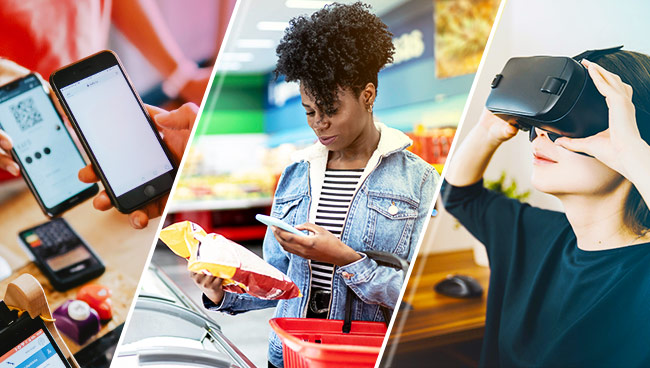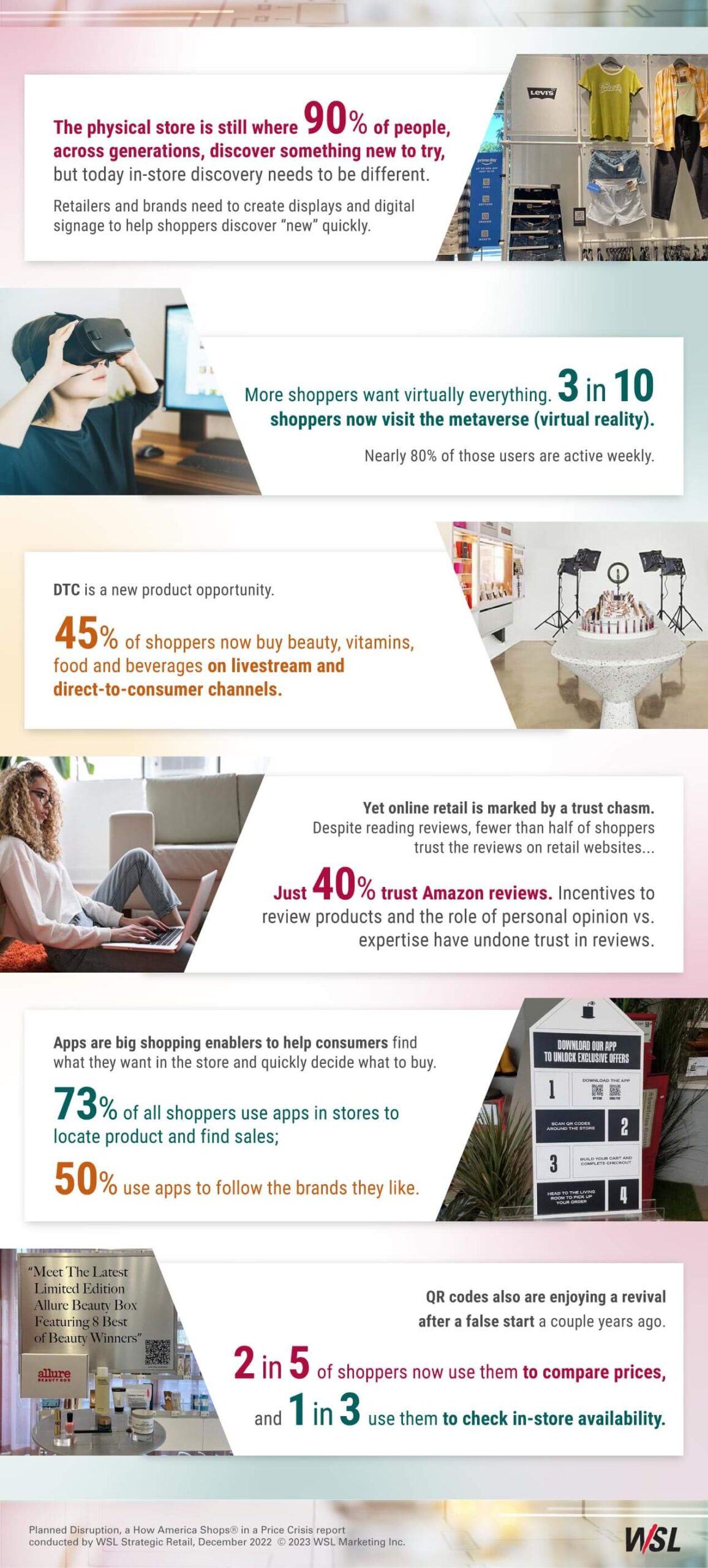Massive disruption in where shoppers buy is underway, but in WSL’s new report, “Planned Disruption,” we help you make sense of it so you can meet consumer expectations and create your strategic plan. WSL surveyed consumers across the country to learn how they are discovering new products using new channels, like the metaverse and social media, in their online shopping trips. Based on our consumer insights, we’ve developed a strategy for retailers and brands to stay ahead of consumer expectations.
Planned Disruption is Replacing the Old Chaos of Retail
Back in 2021, we published the report “Future Shop 2022-2024: From Chaos Comes Clarity.” Back then, we advised retailers and brands to start thinking like revolutionaries, because their futures would be marked by “disruptions, acceleration and aberrations.”
Now we’re squarely in that future, as evidenced in our latest How America Shop® report, “Planned Disruption.” In this study, we revisited the biggest consumer behavior tends of 2022 that will guide how shoppers discover new products and new paths to repeat purchases.
Key among our finding:
The Major Factors that Drive Planned Disruption
Indeed, we believe apps and QR codes are the go-to when it comes to planning for the new disruptors. They are the most convenient vehicles for price offers, on-the-spot product information, finding which stores have items in stock and DTC buying.
The key barrier to app and QR codes is their functionality – are they designed to tackle the most basic needs of what consumes want: making a sale, checking sales, locating a product in the store or ordering in advance?
Here’s What We Think Retailers and Brands Should Do
Based on our latest How America Shops® survey results, here’s how we advise retailers and brands to manage planned disruption that will be with us for the next three to five years.
1. Invest in the digital experience with smarter stores.
While more consumers reflexively use digital tools in and outside stores, most still prefer brick stores for finding what’s new. Displays should be created with digital marketing and media in mind – and not just for Gen Z and Millennials. Walmart’s digital partnership with Gap Home, in 2021, is a good example of surprising Walmart’s typical shoppers, while expanding Gap into the lucrative home fashion category.
2. Plan to disrupt metaverse categories.
Shoppers have given their seal of approval to virtual reality spending, with many investing their discretionary dollars in metaverse entertainment and apparel for their avatars. Here’s what we expect next: avatar wellness. Think virtual goods that keep avatars healthy and can be easily transitioned to human use, such as energy-boosting water, beauty and mental health products.
3. Plan to disrupt other DTC categories, too.
For a long while, shoppers trusted social platforms and direct-to consumer channels for their technology and fashion purchases. Their comfort with these options have opened doors to other categories, such as beauty, health and food. Retailers and brands should introduce new categories to DTC, including home care, home fragrance and personal fragrance – now. Don’t wait for shoppers to ask for them.
4. Ensure you put the “app” in “happy.”
Retail apps are ubiquitous, but not all are seamless. Some require a loyalty program membership, and often practicality and ease are sacrificed for bells and whistles. Apps should, above all, be practical so the shopper can easily locate a category in the store, find coupons and order out-of-stock items online.
5. Resist the urge to QRowd shoppers with ads.
Regardless of how many of your customers use QR codes, retailers and brands should not turn them into advertising tools. QR codes, like apps, work most effectively when they are useful and instructive – providing category locations, product ingredients and sourcing, for example.
6. Address the trust issue.
Most customers are not convinced the online retail and brand reviews they read are credible. Retailers and brands need should consider how to boost credibility in reviews.
We Have Other Insights To Disrupt Your Competition
Consumers use technology to disrupt the shopping trip. Retailers can use technology and customer data to plan for that disruption. Based on what shoppers tell us and what they are doing, planned disruption is the retail marketing strategy for today and for the next three years – at least.
WSL subscribers can access and download the full report, Planned Disruption,” here. If you’re not a subscriber and would like to learn more about the benefits of being one, send us a digital “hello” here. Thanks!



